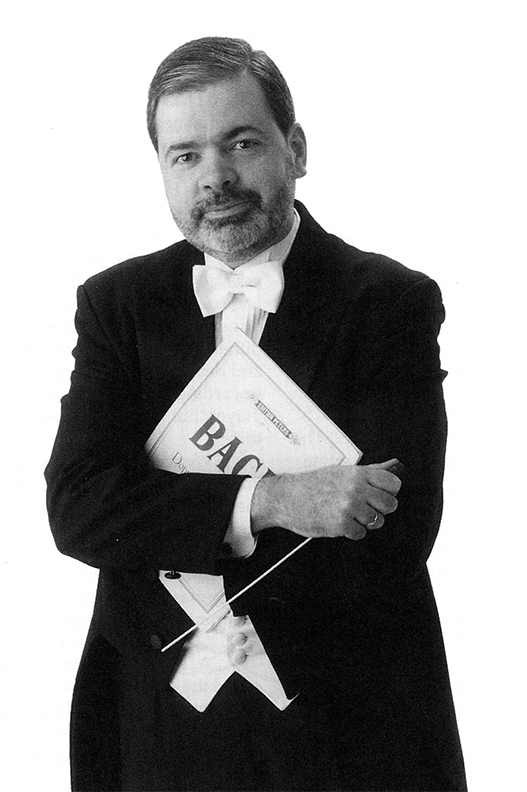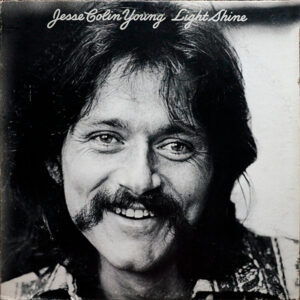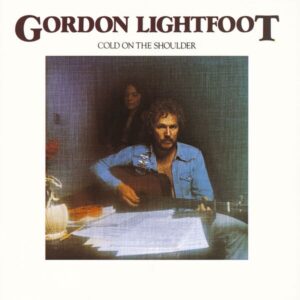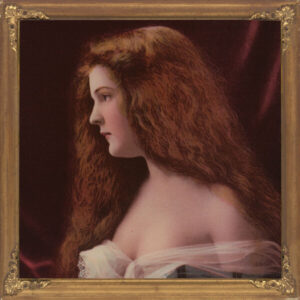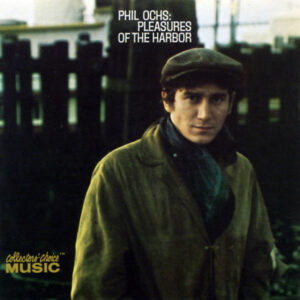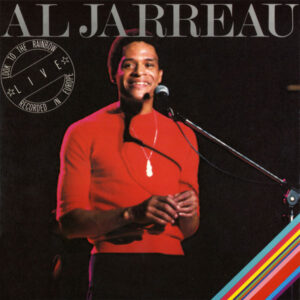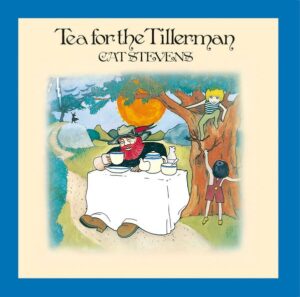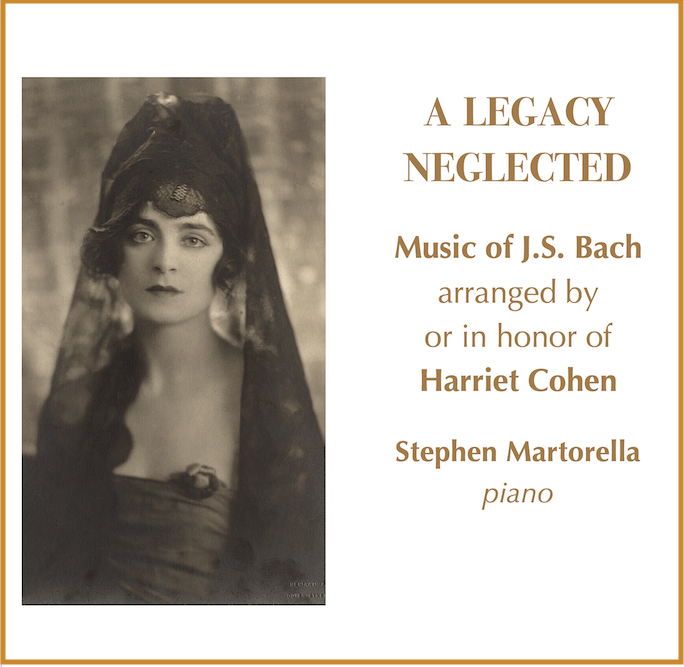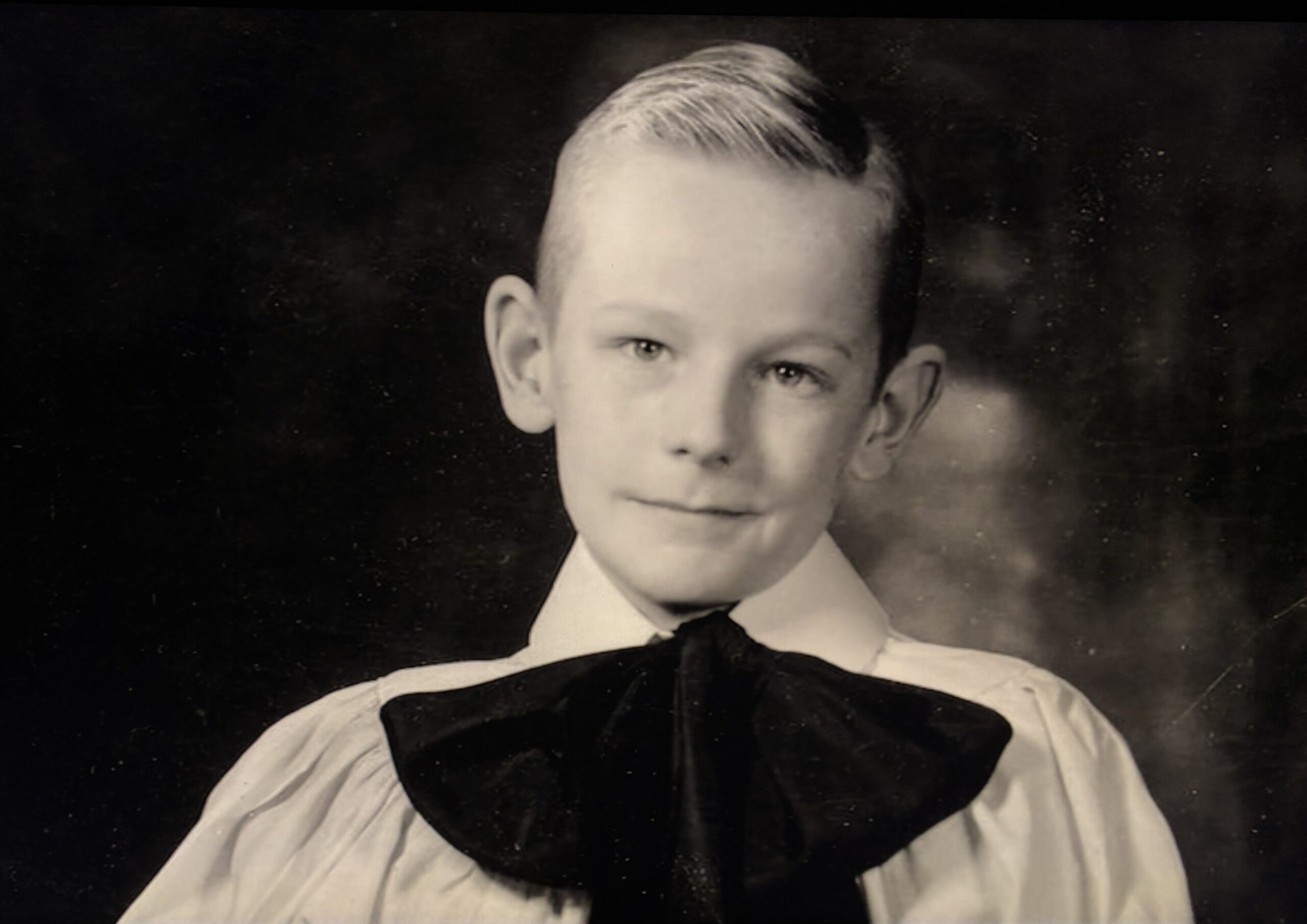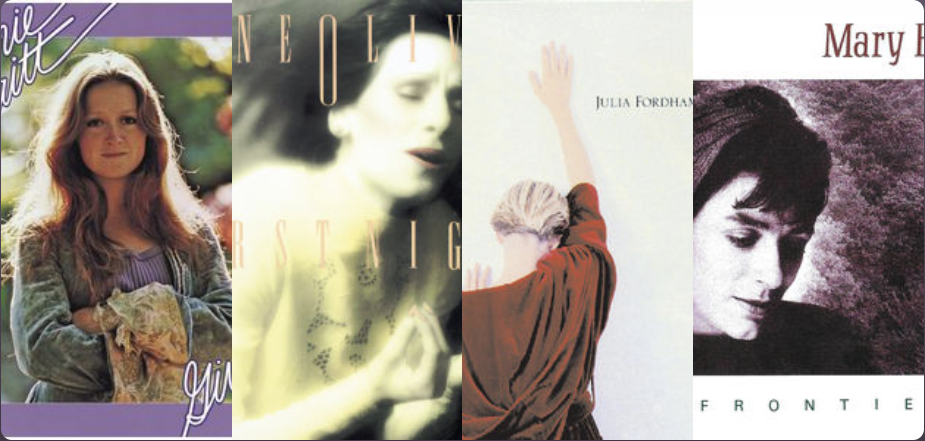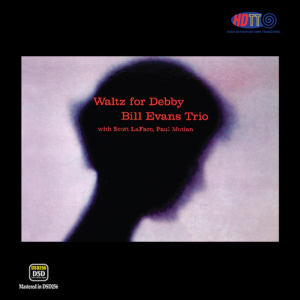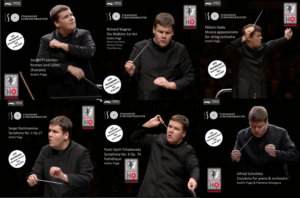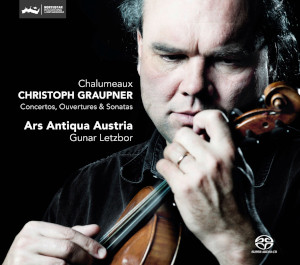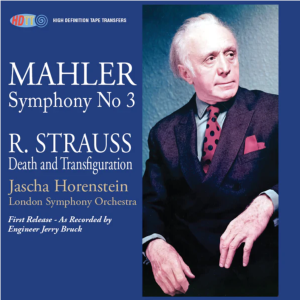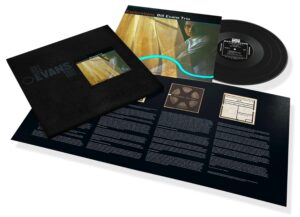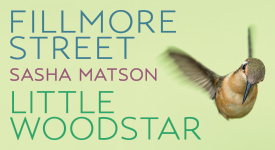Bach hanging out with John Marks...
John Marks continues with the Gentlemen; see HERE for Part 1.
QOBUZ Playlist Link
https://play.qobuz.com/playlist/33451444
Jesse Colin Young, Light Shine (1974)
"Jesse Colin Young" was the stage name of singer-songwriter Perry Miller (1941-2025). He chose that stage name in part because of his admiration for Lotus sports- and racing-car designer Colin A.C. Chapman. Reportedly, the young Perry Miller was an elementary-school classmate of Paul Simon and Art Garfunkel's.
Mid-career, Young went through a period of Native American/First Peoples advocacy, exemplified by his song "Before You Came." I also recall his accessorizing his electric guitar by dangling a large feather from its headstock. I am aware that "Perry," as a family name (surname), is not unknown among First Peoples in Rhode Island. However, as far as I can discover, unlike Jimi Hendrix, Perry Miller/Jesse Colin Young never claimed actual Native American ancestry. That said, he did make a pilgrimage of sorts to Wounded Knee, and he did name one of his children "Cheyenne."
Young started off as a solo performer, releasing two albums, The Soul of a City Boy (1964) and Young Blood (1965). He then joined with another singer to form first a duo and later a group, both called the Youngbloods. The Youngbloods are mostly remembered for the song "Get Together," which is one of those "And Then, Lightning Struck" music-business stories.
The song was written by Chet Powers, under the nom de plume "Dino Valenti" (Powers later was a member of the San Francisco band Quicksilver Messenger Service.) The Kingston Trio released a live performance of "Get Together" as a track in their 1964 album Back in Town. But their label did not release it as a single. (Major Oops.)
The Youngbloods released "Get Together" both as a track on their self-titled 1967 début album, and as a single. The single charted respectably for a new band, No. 62 on the Billboard Hot 100. But it did not set the world on fire.
And then, two years later, in 1969, lightning struck.
The Youngbloods' "Get Together" was used in a radio PSA (Public Service Announcement commercial) for the National Conference of Christians and Jews. Promoting peace, love, and brotherhood, no doubt. Listeners phoned their radio stations asking them to play the complete song. Or at least to give them enough information so that they could buy whatever album it came from.
RCA's head of promotions threatened to quit if RCA did not re-release the single. So, RCA did. Second time around, the Youngbloods cracked the Top 10, peaking at No. 5, and earning a RIAA Gold Record for one million copies sold.
My guess is that Valenti's traditional religious references within the song went over most peoples' heads, they were so busy just singing along. My favorite being:
We are but a moment's sunlight
Fading in the grass
Which always reminds me of a Scripture quotation from Brahms's German Requiem:
For all flesh is as grass,
and all the glory of man as the flower of grass.
1 Peter 1:24 (KJV)
Heavy stuff!
Because of the National Conference of Christians and Jews PSA (and, in short order), the Youngbloods' "Get Together" became an evergreen cultural anthem. It was used in the film Forrest Gump, and in a Simpsons episode. It was also used in a Walmart commercial. Covers? Yes, there were covers, by everybody from the Dave Clark Five and Jefferson Airplane to the Staples Singers and the Carpenters (twice).
The stresses of touring almost certainly contributed to the breakup of the Youngbloods in 1972.
Jesse Colin Young's second post-breakup solo album Light Shine is my favorite of his releases. That's because I think it does the best job of holding together as an album. Equally important, it is his most jazz-influenced album. Side "A" being a "California Suite" with extended instrumental breaks.
All that said, the third part of "California Suite" is the title track "Light Shine," which is (again) a very earnest exhortation to your (hoped-for) very intense personal espousal of: peace, love, and brotherhood.
Problem is, the song risks being perceived as just another sermon. But, at least, it is a nice, "positive" sermon. No Hellfire and Dalmatians. BTW, as a teenager, Perry Miller had been a "Born-Again" Christian.
The central "California Suite" song "Gray Day" stretches out to more than 11 minutes. Multi-wind jazz player Jim Rothermel is credited for Alto and Soprano Saxophones, Clarinet, Flute, Recorder, and Harmonica.
In the same general time frame, Rothermel played on Van Morrison's rather enigmatic (or even gnostic; as in, only for the initiated) album Veedon Fleece. And we all know that Mr. Morrison is not known for hiring beginners or amateurs.
I think I also hear bongos or congas in the mix, which gives "California Suite" a real "1950s San Francisco Jazz & Poetry Club" feel. Light Shine is a remarkably "organic" analog recording job. Used Light Shine LPs can be had for a song… cheaper than the downloads. Don't miss out.
Gordon Lightfoot, Cold on the Shoulder (1975)
I'd be tempted to say that, if, back in the day, they had ever decided to hand out a Nobel Prize in "Knowing When to Dump a Really Toxic Girlfriend," I am sure that Gordon Lightfoot (1938-2023) would have walked away with that medal, in a heartbeat.
(His family name is Scottish. It seems that lots of people assumed that it was Native American. There's also a Scottish family name "Proudfoot." You can look that up.)
However, it is not totally clear whether Lightfoot actually dumped the toxic girlfriend, or if she simply moved on to greener pastures. If the latter was the case, Lightfoot certainly lucked out. Ol' Gord dodged a bullet that had had his name lovingly engraved upon it.
Despite being married, Lightfoot carried on a tempestuous affair with his employee Cathy Smith. (In Biblical Terms, that's called "Putting Your Rod, Into Your Staff."*) The affair was characterized by extreme distrust and occasional violence on his part, which were contributed to by Lightfoot's alcohol abuse and cocaine abuse.
*I am not making fun of Psalm 23, or the Old Testament, or the Bible. I am making fun of two supremely egotistical guys who were middle-aged at the times of the foolish events in question. Their names are: Gordon Lightfoot; and, of course, Bill Clinton. —JM
Lightfoot wrote his song "Sundown" in the throes of his feelings of jealousy, anxiety, and despair over that adulterous affair. "Sundown" became Lightfoot's only U.S. Top 100 No. 1 hit single. ("The Wreck of the Edmund Fitzgerald" only reached No. 2.)
"Sundown" was by far his most lucrative song. Which is rather ironical. That's because, in short order, Lightfoot's divorce became the most expensive divorce in Canadian history (to that date).
Cathy Smith (who sang backup on the album Sundown—of course) moved on to selling heroin to the likes of Rolling Stones members Ronnie Wood and Keith Richards. She copped a plea and served 15 months for administering the fatal overdoses of heroin mixed with cocaine that killed Saturday Night Live comedian John Belushi. Perhaps, at that moment, as the saying goes, Lightfoot felt someone walking on his grave.
The cynic in me wonders whether Cathy had spent any Quality Time with any of the (male) Prosecutors. She should have been facing Life in prison for Felony Murder. You can trust me on that. I am a former lawyer who worked on one of the most famous televised criminal trials of the 20th century.
Perhaps because the Folk music movement of the 1950s and 1960s put such a premium on "authenticity" (which, in practice, often turned out to be more like "naive artlessness"), Lightfoot never made a fuss about his very impressive musical education and credentials.
Lightfoot was a former boy-soprano church singer, with classical training. One year, he won the Canadian national singing competition for boy sopranos. Young Gordon's competition showpiece was Franz Schubert's art song "An Sylvia" (literally, "To Sylvia"). The text for that lied is a German translation by Eduard von Bauernfeld of "Who is Silvia?" from Act 4, Scene 2, of The Two Gentlemen of Verona, by William Shakespeare.
"An Sylvia" is a work from Schubert's most mature period, the time of his 9th Symphony. Darn impressive for a pre-pubescent boy to stand up in front of a bunch of strangers and sing, in German. And win.
In 1958 Lightfoot undertook conservatory-level studies in Jazz Composition and Orchestration in California. To support himself, he wrote, arranged, and produced commercial jingles, later moving on to actual songs.
By 1965, Lightfoot's songs had been recorded by (and were selling well for) Peter, Paul & Mary, Ian & Silvia, the Kingston Trio, Elvis Presley (need I go on?), Bob Dylan (need I go on?), Chad & Jeremy, George Hamilton, the Clancy Brothers, Marty Robbins, Richie Havens, and Judy Collins. Evergreen songs such as "Early Morning Rain," and "For Loving Me."
Lightfoot's 20 studio albums are an embarrassment of songwriting riches. Picking which one less-well-known album to feature for a deep dive was a challenge. In the end, I decided upon 1974's Cold on the Shoulder, because a few of the songs are emotionally engaging to an even higher level than Lightfoot's already-impressive customary Hankie Tally. Those being "Rainy Day People," "Bells of the Evening," and "Now and Then." Sad to relate, Lightfoot was probably better at ending a relationship then persevering in it.
Mickey Newbury, Lulled by the Moonlight (1996)
Gordon Lightfoot dedicated a song ("Your Love's Return") to Stephen Foster (1826-1864). That song is found on Lightfoot's breakthrough first Warner Brothers LP Sit Down Young Stranger, which was re-titled If You Could Read My Mind.
Nashville legend Mickey Newbury went Lightfoot one better: Newbury (1940-2002) wrote a song in which he (so to speak) speaks in the voice of Stephen Foster. As though it is Stephen Foster who is singing Newbury's lyrics. From beyond the grave, that is. Whew. And Newbury makes it work. And, he dedicated the entire album to Foster.
https://en.wikipedia.org/wiki/Mickey_Newbury
Stephen Foster's catalog of more than 200 songs, such as "Jeanie with the Light Brown Hair," "Beautiful Dreamer," "My Old Kentucky Home," and "Oh! Susanna" brought forth a quiet revolution in American musical tastes.
First, Foster's exposure to music from diverse ethnic groups (African-American, Scots-Irish, Italian, Czech, and German) allowed Foster seamlessly to combine those influences into something new: the Romantic-era American Parlor Ballad. Example: The rhythm of "Oh! Susanna" is a Polka.
Equally as important, Foster, who wrote his first song at age 14, lucked into a mentor, German-born music dealer Henry Kleber, who guided Foster in a course of study encompassing masterworks by Mozart, Beethoven, von Weber, Schubert, and Mendelssohn.
Foster single-handedly re-set (or rather, raised) public expectations concerning the artistic sophistication of popular music. I myself cannot exactly pinpoint them, but it is claimed that Foster quoted two measures from Schubert—in a song about the steamboat The Glendy Burk. Supposedly there is also a brief quotation from a Robert Burns Scottish ballad. In a song about a steamboat.
I don't think that Foster really needed the endorsement; but, as storied and revered a contemporary songwriter as Bob Dylan saw fit to make his own recording of Foster's "The Hard Times Come Again No More." (Well, it is in the Public Domain, after all.)
The quality of Foster's output peaked in the second half of his brief career, when he was writing Romantic Parlor Ballads. For the first half of his career, he mostly wrote Minstrel Show "Blackface" music. Some people today want to "Cancel" Foster for that.
However, Frederick Douglass himself praised "My Old Kentucky Home" as awakening sympathy for slaves. That was because sympathy is the Sine Qua Non of embracing an anti-slavery political position. The anti-slavery novel Uncle Tom's Cabin inspired Foster to write that song. That closes that case, as far as I am concerned.
Foster's family and especially his de-facto Artistic Executor, his brother Morrison, destroyed much information that they thought might reflect poorly upon the family. Therefore it is not known, it can only be speculated, whether Foster died by accident, or by suicide.
Furthermore, any letters or writings that might have commented upon depression or other mental-health issues would have been destroyed. That said, many of the songs that Foster wrote in his final months were dark; a couple even prefiguring his death.
When Foster was found in a pool of blood in his hotel room, his wallet contained a scrap of paper upon which he had written, "Dear friends and gentle hearts." There also was Civil War paper currency in the amount of 37 cents, and three copper pennies. If there is a sadder story in Music History, I really don't want to know about it. Requiem Æternam Dona Ei, Domine, Et Lux Perpetua Luceat Ei.
It is, as far as I know, universally assumed that Foster wrote down "Dear friends and gentle hearts" as an aide-mémoire, because he thought that it had potential as a song lyric or title. Mickey Newbury either misremembered the quote, or decided that a similar phrase, "Dear hearts and gentle people," was easier to set to music for his song "Three Bells for Stephen."
Perhaps Newbury wanted to move the "s" at the end of "hearts" back away from the end of the phrase. Some singers are phobic about ending a phrase with a sibilant consonant. (IMHO, too many of them "fix" that problem by omitting the final "s" entirely, which always irks me. Lisa Richard, I am lookin' at you. But, very admiringly.)
The three bells being, for the church ceremonies of Baptism, Holy Matrimony, and Funeral. There was a famous 1950s Country song called "The Three Bells," or "Little Jimmy Brown," by the siblings singing group The Browns. Their single spent four weeks on top of the Hot 100, and it also topped the Country chart.
I find Newbury's writing so compelling that, in the spirit of Fair Use, here are all the lyrics:
Do you remember me
Dear hearts and gentle people
I pray I have not stayed away too long
Do you think of me
Dear hearts and gentle people
You can buy my memories for a song
Can you see the blue hills of Kentucky
Can you see my old Kentucky home
Can you hear my sweetheart sadly singing
In a voice as pure and sweet
As heather in the gloam
Will you pray for me
Dear hearts and gentle people
For what I have seen has brought me to my knees
On those lonely nights I could find no sleep
Oh I would unlock my heart and soul
On strings and ivory keys
Now I come to you
Dear hearts and gentle people
A voice across an endless sea of time
Where ever there are songs I will be singing
Dear hearts and gentle people goodnight
Dear hearts and gentle people goodnight
©2006 "Saint Cecelia Knows" music publishing.
If that doesn't make you want to learn more about Mickey Newbury… Well, here's the short version. To this day, Mickey Newbury remains the only U.S. songwriter ever (1968) to have four Top 5 songs simultaneously on four different Billboard charts (three #1 positions, and one #5 position):
"Just Dropped In (to See What Condition My Condition Was In)"
#5 on the Pop/Rock chart
(Kenny Rogers and the First Edition)
"Sweet Memories"
#1 on the Easy Listening chart
"Time Is a Thief"
#1 on the R&B chart
(Solomon Burke)
"Here Comes the Rain Baby"
#1 on the Country chart
(Eddy Arnold)
Johnny Cash, Linda Ronstadt, Roy Orbison, Charlie Rich, Tammy Wynette, Willie Nelson, Kenny Rogers, and Joan Baez all recorded Newbury's songs. Not incidentally, Mickey Newbury's 1972 song medley "An American Trilogy" was a showstopper in Elvis Presley's live shows, such as his live satellite-television broadcast Aloha from Hawaii.
Newbury's "Trilogy" might have been inspired by Gordon Lightfoot's 1967 "Canadian Railroad Trilogy," which was a mega hit. To the point that, when Queen Elizabeth met Gordon Lightfoot, she reportedly told him how much she liked that song.
Well, Mickey Newbury is either going to be a wonderful new songwriting discovery that you will thank me for; or not. My favorite among his early albums is I Came to Hear the Music, which, for whatever reason, cannot be found on Qobuz.
That could be another case of an artist's having worked very hard to claw back possession of their master tapes, but only to find out that running a record label soup-to-nuts is not that easy.
Phil Ochs, Pleasures of the Harbor (1967)
Phil Ochs (I have been told that his family name is pronounced "Oakes") had released three albums before signing with major label A&M. His A&M début was something of a minor critical success, as well as something of a minor Succès de scandale because of a marijuana reference in one song.
But it is Pleasures of the Harbor's grandiose title track that justifies picking up a copy (or at least giving the title song a listen via Qobuz or another streaming service).
The song "Pleasures of the Harbor" certainly qualifies as Baroque Pop, but it did not get major airplay. Hardly any at all. Nothing like the airplay success other Baroque-Pop pioneers "Walk Away Renée" and "Long, Long Time" had had (or would have).
That's because "Pleasures of the Harbor" is a rather wistful, poetic account of an encounter between a lonely sailor on shore leave… and a sex worker. AM radio was not only uninterested; AM radio was unsmiling. By the way, the session musicians included Lincoln Mayorga, and reportedly, the young Warren Zevon, playing guitar on the title track.
Furthermore, the orchestration goes beyond Baroque Pop, all the way to "A Romantic Film Score that Erich Korngold Could Have Penned." I loved it. But Phil Oakes reportedly later regretted its excesses. You decide.
In Mr. Oakes's defense, I want to note that, after all, 1967 was the release year of Richard Harris's gargantuan "MacArthur Park." In comparison with "MacArthur Park," "Pleasures of the Harbor" might as well be an Elizabethan Lute Song.
Al Jarreau, Look to the Rainbow (Live in Europe) (1977)
Over the course of his long career, Al Jarreau won seven Grammy awards. He also sang the theme song of a hit television series (Moonlighting, which was one of Time magazine's 100 Best TV Shows of all Time). Jarreau's longtime mainstream success as a crossover Pop/Rhythm & Blues artist tended to obscure his roots as a jazz-vocal improviser.
Look to the Rainbow is a live album, and also that rarity, a true jazz-vocal album. It was recorded in Europe in January and February of 1977. It won for Jarreau the Grammy for "Best Jazz Vocal Performance." A neglected masterpiece. Don't miss this fabulous music and singing!
Jarreau's tight little road band included Abraham Laboriel (he also worked with Ray Charles, Michael Jackson, Quincy Jones, Madonna, and Stevie Wonder) on Autoharp. Well, actually; Laboriel played electric bass. But you already knew that.
Jarreau's stripped-down touring band is notable for the absence of guitars and brass instruments. The Fender Rhodes electric piano predominates; but there are also string-synth contributions, and the vibes provide a counterpoint to the piano. Leaving lots of space for Jarreau to play around in.
I have long suspected that the English-language Emcee's announcement that opens the first LP, "Good Evening, Ladies and Gentlemen; will you join with us in welcoming please Warner Brothers recording artist Al Jarreau" was later fakey-doo'ed, and dubbed in for the US LP release.
That's because Jarreau's scat introduction to the first song, "Letter Perfect," seems to be riffing on the word "Berlin." That suggests to me that Jarreau was in Berlin, and that he was reaching out to his audience. Perhaps some record-business insider wants to clear his conscience, at this late date.
Cat Stevens, Tea for the Tillerman (1970)
If this pick offends you, just skip down to where I list several "Alternate Albums for the Cat Stevens Dislikers."
In the 1960s and 1970s, I think there was no clear dividing line separating "Sensitive and Empathetic" male singer-songwriters from "Self-Absorbed and Passive-Aggressive" ones.
Gordon Lightfoot certainly had his moments of wounded one-sidedness. Dan Fogelberg's "Be On Your Way" (original working title: "Don't Let My Screen Door Whack You on the Fanny as You Leave") is a classic of blame-shifting. And, Cat Stevens's early catalog is rife with "Poor, Poor, Pitiful Me-ism."
Young Master Stevens was very upset that his American girlfriend Patti D'Arbanville had the impertinence to plan to return to the US for a month. His way of lashing out at her was to write a Madrigal-style, out-and-out Elegy, mourning her death:
"My Lady D'Arbanville, why do you sleep so still?"
That was Track 1 on Stevens's comeback album Mona Bone Jakon. When Patti heard that song on the radio in New York City, she knew it was over. I would have advised her to take out a Restraining Order.
And if I had been prescient, I would have requested that the Restraining Order would also bar Stevens from publishing, releasing, or performing any songs which reasonably could be inferred to refer to Ms. D'Arbanville. Such as the hit-ish single "Wild World."
Feminist music critic Ellen Willis proposed Gender Reversal as a Litmus Test for sexism in songs. If the role-reversal version seems unlikely or silly, the original song is likely sexist.
Applying this rubric, Ms. Willis claims that the Rolling Stones' "Under My Thumb" is merely tit-for-tat (obviously, my words not hers!) with Nancy Sinatra's "These Boots."
Whereas Cat Stevens's "Wild World" is, when reversed, silly. As though, a woman is really going to warn her departing boyfriend that he is far too inexperienced and innocent for the Big Bad World out there.
So, John: Why are you recommending an album by this…character?
The first reason is that Tea for the Tillerman is a remarkably vivid recording, both dynamically and timbrally. Next, the imaging and soundstaging are superb. After all, the Tea for the Tillerman LP was featured on The Absolute Sound's "Super Disc" list.
Third, notwithstanding the schmoo that Stevens could be, the opening number "Where Do the Children Play," which suggests that technological progress might rob children of their childhoods, was and remains palatable.
The same can be said for the second track, "Hard Headed Woman." That song suggests that Stevens had a grasp upon his own personal… if not so much shortcomings, at least his lacks of Excellence in some areas.
The next two songs are patronizing, but the same can be said of some Lightfoot songs. Tea for the Tillerman explores generational conflict as well as romantic conflict, within an overall theme of struggling to fill the spiritual vacuum left by modern life.
Not incidentally, Stevens is another example of a Fine Arts student who kicked over his traces and had enormous success as a music writer. Prime UK examples being John Lennon, David Bowie, and Brian Eno. And Canada had Joni Mitchell, while in the US of course we had the Talking Heads.
Furthermore, former art student Cat Stevens's musical horizons were sufficiently wide that he could not only pen a massively passive-aggressive Mock Madrigal: the end of the brief title track of Tea for the Tillerman, which is the last track, certainly sounds like an African-American religious gathering. And he did his own cover art.
Rather than Over-Thinking matters, I'd recommend that you just listen to the fine sounds. However: I assume that some will remain unconvinced. Therefore: Male-singer Songwriter Alternatives for the Cat Steven's Dislikers:
Jackson Browne, Self-Titled (1971)
Jackson Browne, Late for the Sky (1974)
Jim Croce: You Don't Mess Around with Jim (1972)
Dan Fogelberg, Home Free (1972)
Michael Franks, Sleeping Gypsy (1977)
Tom Rush, Wrong End of the Rainbow (1970)




